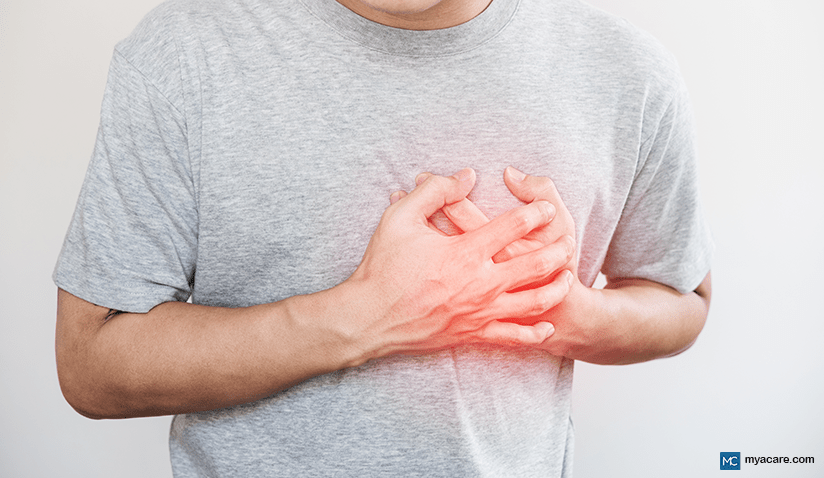COMMON TYPES OF NEURO DISEASES - PART 1 - DEMENTIA DISEASES

In continuation on our series on Neurological Disease, here is the next segment on Dementia Diseases.
Dementia Diseases
Dementia is almost always caused by the accumulation of a specific type of protein in the neurons of the brain, which causes them to atrophy.[2] The only exception to this rule would be vascular dementia, however each other type of dementia tends to be coupled with a vascular component and thus it is difficult to disassociate vascular dementia from the rest.
All forms of dementia tend to result in shrinkage of the brain’s size and loss of cognitive functions, particularly memory recall. Wherever there are atrophied neurons, there is a loss of neural connection and firing that gives rise to a sort of “Swiss cheese” effect. Hence the resultant gaps in memory and cognition.
Currently there are roughly 47 million people living with dementia worldwide[3].
General Symptoms of Dementia
The main symptom of dementia would be trouble recalling memory. Patients with dementia have been reported to forget even what happened a few minutes prior. Most forms of dementia appear to begin with mild cognitive impairment pertaining to memory loss, yet a diagnosis can only truly be made when other symptoms are present.[4]
Other symptoms of dementia may include:
- Disorientation
- Delusional and irrational thinking
- Personality changes
- Loss of reasoning ability and executive functions
- Difficulty focusing
- A decline in social skills
- Visual-spatial difficulties
- Deficits in judgement and perception
- Problems with speech and other areas of cognition
- Intensity of symptoms at sunset or when tired
Symptoms of dementia in the elderly can be also easily confused with side effects of certain pharmaceutical drugs. Scientific literature reports that the elderly tend to be far more sensitive to these side effects than the rest of the population. In susceptible individuals, medications may cause excessive sedation, confusion and agitation that can mimic dementia and have considerable impact on cognitive capacity. Painkillers, sedatives, anxiolytics, and antipsychotics are among some of the greatest offenders. It is very important to consult with a healthcare professional if drug-induced dementia is suspected.
Each type of dementia tends to present with additional symptoms that are discussed below under types of dementia.
Types of Dementia
There are 6 common types of dementia, with a few other forms that are rarer and not very well understood. The main types are discussed below, as well as a very brief look at a few of the rarer types.
1. Alzheimer’s Disease
Alzheimer’s Disease (AD) is the number one type of dementia, accounting for 60-80% of dementia cases.
In this form, tau protein regulation becomes hampered and the protein begins to overexpress, which creates neurofibrillary tangles. Amyloid beta is another protein that is overexpressed in AD that causes plaques to form in the brain. From both angles, neurofibrillary tangles and amyloid plaques cause neurons to degenerate and atrophy.
It has been noted that vascular complications tend to contribute substantially to the onset of AD and that up to half of AD patients suffer from some form of a simultaneously present vascular or cerebrovascular condition.
Specific Symptoms
The symptoms of AD are the most commonly cited for all dementias, including:
- Memory loss
- Deterioration of other cognitive functions such as language ability, abstract reasoning, and calculating
- Deficits in visual-spatial judgement
- Left-right disorientation
- Depression, aggression and other chronic negative moods
- Insomnia
- Hallucinations
AD does not detract from motor coordination, but may prevent the ability to make precise pre-planned movements – a term known as limb praxis[5].
Late-stage AD can present with incontinence.
Risk Factors
The following may increase the risk of developing Alzheimer’s Disease[6]:
- Genetic inheritance
- Vascular risk factors (see vascular dementia)
- Severe chronic stress
- Depression
- Prolonged sleep deprivation or inadequacy
- Being a widow or widower
2. Parkinson’s Disease
Parkinson’s disease (PD) is the most common neurodegenerative movement disorder[7], affecting 1% of the population over the age of 60. Those with the disease progressively lose functionality of dopaminergic neurons in the substantia nigra, which is a very small component of the basal ganglia in the midbrain. The substantia nigra is related to the reward system of the brain as well as aiding in facilitating bodily movements. Loss of dopamine transmission in this area is typically a result of Lewy Body deposition (see Dementia with Lewy Bodies).[8] [9]
The symptoms that are classic to Parkinson’s disease characterize a neurological state known as Parkinsonism. Parkinsonism can also present as a symptom of another neurological disease. Not all patients with Parkinson’s disease develop dementia, however the vast majority do (just under 80%) in the later stages of the disease.
Specific Symptoms
The main symptom of parkinson’s disease would be uncontrollable resting tremors. Others include:
- Impaired movement
- Slowness
- Muffled speech or difficulty forming words verbally
- Difficulty in walking due to limb rigidity
- Static facial expression
- Only able to write in tiny handwriting
- Amnesia
- Depression
- Loss of smell
- Excessive salivation
- Restless limb movements during sleep
Even though cognition and movement are heavily affected in most people with Parkinson's disease, the patient may not be aware of their symptoms and thus may not be able to agree with or accept the diagnosis.
Those that do not present with dementia tend to still present with amnesia or forgetfulness.
Late stage Parkinson's disease can cause posture to become unstable, making ordinary tasks a lot more challenging.
Risk Factors
PD risk factors include[10]:
- Chemical agents such as pesticides, herbicides and industrial pollution
- Male gender
- Brain trauma or injury
- Ischemic or cerebrovascular damage
10% of Parkinson’s Disease can be caused by genetics, however these cases tend to manifest at much younger ages.
3. Dementia with Lewy Bodies
Dementia with Lewy Bodies or Lewy Body Dementia (LBD) comprises between 5-10% of dementia cases. It can be very difficult to diagnose this form of dementia and therefore its incidence may be higher. Some sources state that it is the second most common form of dementia and tends to affect men more on average.
LBD is the result of the internal accumulation of Lewy bodies in neurons. Alpha-synuclein is the main protein involved in LBD, clumping together to form insoluble aggregates similar to the amyloid-beta plaques seen in Alzheimer’s Disease. Lewy bodies are commonly distributed in different patterns pertaining to either the brainstem, limbic region or diffusely throughout the entire brain, particularly the neocortex. The distribution and density of Lewy bodies gives an indication of the disease severity.
Specific Symptoms
Lewy body disease is thought to share very similar etiology to Parkinson’s disease and symptoms may overlap.
Common LBD symptoms include:
- Lowered ability to focus
- Decreased fluency in language
- Physical slowness
- Impaired visual-spatial proficiency
- Parkinsonism (see parkinson’s disease)
- Highly lucid visual hallucinations
- Trouble with processing visual sensory information
- Sleep disturbances
- Delusional thinking
Risk Factors
Risk factors for LBD are generally a composite of those for AD and PD[11]. Other risks include:
- Anxiety
- Depression
- Stroke
- Familial Parkinsonism
- Male gender
4. Fronto-Temporal Dementia
According to some sources, Fronto-Temporal Dementia (FTD) occurs in roughly 25% of cases above the age of 65. However, it is unclear of the exact incidence rate due to research limitations.
FTD is characterized by the neuronal deposition of ubiquitinated TDP-43 (TAR DNA-binding protein 43) and tau protein in the frontal and temporal lobes. There is much still to be learned about this form of dementia. Deficits in serotonin and increases in acetylcholine also seem to be implicated.
Specific Symptoms
Symptoms unique to FTD include spatial disorientation, the early onset of personality and behavioral changes (e.g. loss of insight, blunted emotions, inappropriate social conduct, etc), as well as aphasia. Aphasia refers to any loss of functionality pertaining to language, such as a decline in speech, language comprehension and the abilities to read and write[12].
Interestingly, memory and visual-spatial skills (e.g. depth perception) are relatively well preserved.
Risk Factors
It is not well known what may place one at a higher risk for FTD, however the following has been associated with increasing the risk:
- Diabetes
- Obesity[13]
- Traumatic head injury
- Autoimmune disease[14]
- Thyroid dysfunction[15]
5. Vascular Dementia
Vascular dementia accounts for between 5-20% of dementia cases and its incidence tends to double every 5 years with senescence.
This form of dementia is a result of repeated ischemic brain injury and is very closely linked to the health of the cardiovascular system. Ischemia occurs when there is a lack of oxygen and tends to result in permanent death of the neurons at the oxygen-deprived site. Cerebrovascular diseases such as stroke and traumatic brain injury, as well as cardiovascular diseases, are the number one contributors towards the development of vascular dementia.
Current research is beginning to show that Alzheimer’s Disease and vascular dementia share very common features and are rather difficult to separate clinically.
Vascular dementia can also be divided into the following sub-categories[16]:
- Binswanger disease
- Subcortical vascular dementia
- Mild vascular cognitive impairment
- Multi-infarct dementia
- Vascular dementia as a result of localized ischemic damage in the form of a hemorrhagic lesion, lacunar lesion or a single infarct.
Specific Symptoms
Vascular abnormalities are common for those with vascular dementia, such as unbalanced cholesterol levels or ratios.
Other symptoms include:
- Deficits in sensory and motor coordination, such as delayed reactions to sensory stimuli
- Potential difficulties with speech
- Trouble with maintaining physical balance, walking and coordination
- Clumsiness
- Headaches
- Severe weakness or sensory deficits in one half of the body
- Urinary difficulties
- Involuntary facial expressions
- Mood swings
Risk Factors
Risk factors for vascular dementia are very similar to those for all cardio- and cerebro- vascular conditions, including:
- Hypercholesterolemia
- Diabetes Mellitus
- Hypertension
- Smoking
- Ischemic brain diseases
- Obesity
6. Mixed Dementia
Mixed dementia is a non-specific form of dementia in which any of the dementias described present together simultaneously. The most common form of mixed dementia would be Alzheimer’s Disease coupled with vascular dementia or lewy body dementia. It is unclear what the incidence rate is of mixed dementia; yet considering that a high percentage of dementia patients develop vascular issues as they age, the incidence is likely to be quite high.
Specific Symptoms
Symptoms will represent a combination depending on the types of dementia present.
Risk Factors
Cardiovascular abnormalities count as a major risk factor for vascular dementia and thus also for mixed dementia. Other risk factors will be a composite of the risk factors described above, depending on the types involved.
7. Uncommon Forms of Dementia
Uncommon dementias include:
- Huntington Disease. A rare genetic disorder that results in neuronal and synaptic degeneration. Parkinsonism, OCD behavior, involuntary and unpredictable muscle movements, excessive irritability and pain are hallmarks of the disease.[17]
- Corticobasal Degeneration. A disease characterized by tau-related neurofibrillary tangles, as seen in AD[18]. Symptoms of dementia alongside a progressive form of muscle rigidity and spasms can be seen in this condition. Muscle abnormalities are asymmetrical. Parkinsonism is also present without noticeable tremors (i.e. muscle rigidity, muffled voice, muted expression, etc).
- Progressive Supranuclear Palsy. Sometimes referred to as Parkinson-Plus Disorder, and is also derived from tau protein neurofibrillary tangles in various brain areas[19]. Aside from parkinsonism (without tremors), this disease is also symptomatic of blurred vision and loss of control over eye movements.
- Creutzfeldt - Jakob disease. A rare disorder caused by progressive prion protein deposition in the brain[20]. In this type, symptoms include muscle jerks, twitches and spasms, seeing in double vision, dizziness, vertigo, sleep disturbances, disorientation, mood swings, visual hallucinations and vision loss. Prognosis is very poor and patients tend to pass away within a year of acquiring the disease on average.
Current Treatment Options for Dementia
Dementia is so far a non-curable condition, unless it is induced by a specific known cause such as medications, malnutrition or some other treatable condition. Many with dementia require the help of a specialized carer.
In this regard, conventional medicine has focused on treating the symptoms of dementia using a plethora of drugs, including:
- Anti-depressants
- Anti-psychotics
- Anti-convulsants
- Sleep Medications
- Acetylcholinesterase inhibitors
- Anti-hypertensives
- Lipid-lowering drugs
- Painkillers and anti-inflammatories
Deep brain stimulation is an expensive surgical technique that may be used to stimulate the brain electrically. This has been shown to offer relief to those with movement disorders such as Parkinson’s Disease and parkinsonism, however adequate scientific evidence for long-term benefits is lacking.
Other strategies for treating those with dementia include lifestyle interventions such as:
- Cognitive behavioral therapy or training
- Moderate exercise
- Healthy diet high in fresh fruits and vegetables
- Nutritional supplements, with a focus on B vitamins folate, B6 and B12
- Reduced smoking and alcohol intake
- Stress management techniques
- Hormone replacement therapy
- Massage
- Music therapy
- Family counselling
Sana Hospital Group is one of the largest independent healthcare providers in Germany. With over 50 world-class hospitals and more than 2 million patients yearly, Sana operates leading facilities, among them university hospitals, tertiary care centers, and specialized hospitals to deliver a broad portfolio of top-tier medical care. Whether it is preventive health care, an acute or chronic illness, a planned procedure, or a long-term diagnosis - more than 600 chief physicians, 4,500 medical professionals, and 11,000 nursing staff provide excellent treatment options, world-class medicine, and the best possible medical care.
Sources:



